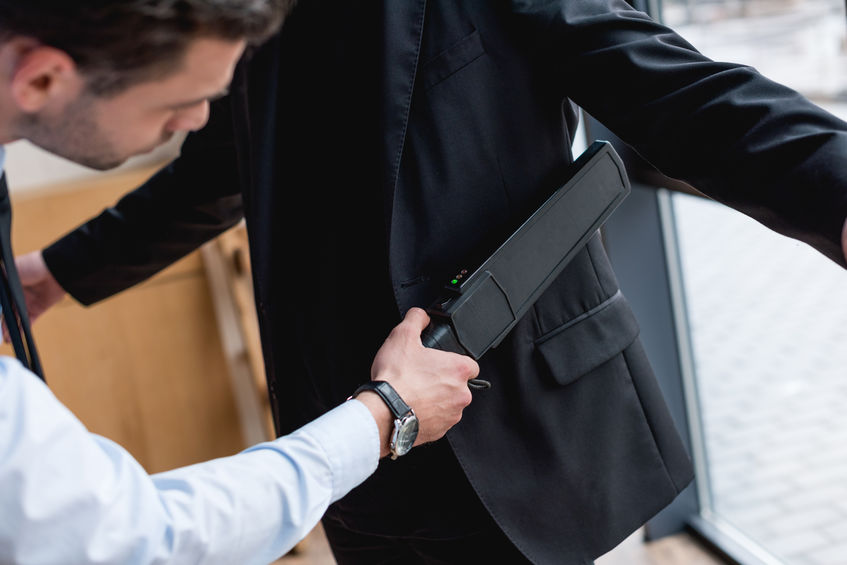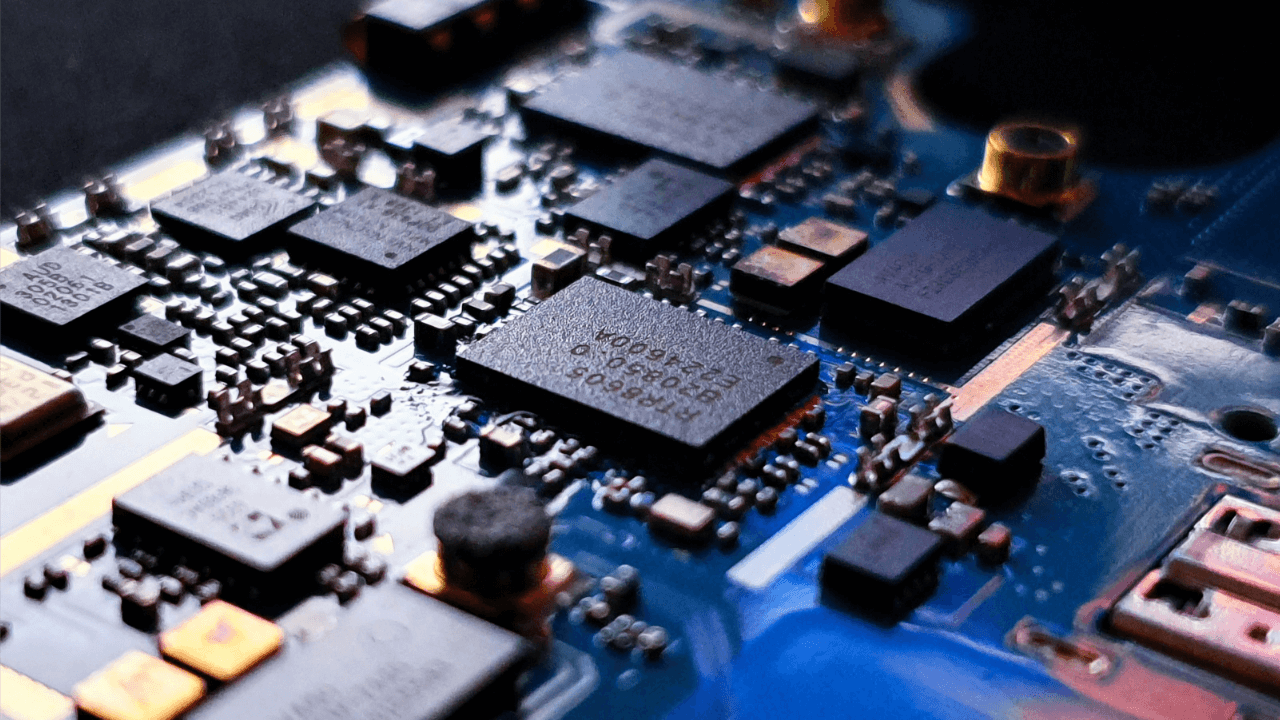
Wireless sensors have an almost infinite number of use cases in IoT applications, but security is one area in which they are indispensable. They are an integral component of commercial and industrial security, and they play a vital role in securing spaces such as warehouses, retail stores, shopping malls, factories, and just about any setting that requires 24-hour oversight.
Types of Wireless Security Sensors
Wireless security sensors are well-known to most people. Whether they are placed at entry points or overseeing open spaces in a warehouse, their ability to detect unauthorized access and movement allows us to monitor assets at a great distance. This capability supports cost-efficient operations, reducing the need for on-site personnel while giving operators peace of mind that their buildings are safe and secure.
In a very broad sense, wireless IoT sensors transform physical spaces into an electronic signal. When a deviation from the baseline is detected, the sensor triggers an alert, which is sent to the IoT cloud platform in real-time. Stakeholders receiving these signals can then act on the event, preventing loss or damage from various sources.
Here are some of the most common types of wireless security sensors used in commercial and residential settings:
Door Sensors
Door sensors typically detect door opening events. Sensors are placed at contact points, and when the door is opened, an alert is triggered and recorded. However, door sensors can also be configured to control locking mechanisms, triggering an open event based on input, either from biometric details or via an access device like a card key, ID card, or manual entry pin pad.
The IoT platform records each event, and if personal identification is required for a door open event, those details are also recorded. The result is a detailed log of who has accessed the door, enabling precise control and monitoring of sensitive spaces, such as clean rooms, storage spaces, or any area where access must be restricted or strictly monitored.
Door sensors can also be configured to trigger an alarm or activate a camera, enabling a technician to direct their attention to the event, preventing loss and identifying threats before they become bigger issues.
Window Sensors
Window sensors work on magnetic contact principles, very much like door sensors. When the contact is broken, an alert is triggered. Windows are an access point, and as such, they are just as important to monitor as doorways. Window sensors are often used along with other sensor types to detect things like temperature changes, a critical function when protecting temp-sensitive assets, such as in cold storage facilities, server farms, or data centers. The temperature sensing function is useful from building a management standpoint as well. It helps users and facilities managers better understand and control power consumption in their buildings and could be pivotal in controlling costs.
Motion Sensors
Detecting motion within a space is a vital concern for all building security applications. Motion detection sensors can be configured to trigger a range of responses, sending real-time alerts to security personnel, initiating an audible alarm, or alerting local police.
Motion sensors detect the presence of people within a space. As a function of smart buildings, this alert can be applied to trigger lighting and temperature control, optimizing energy use, and reducing utility costs by not heating, cooling, or lighting unoccupied spaces.
Commonly used in commercial and industrial buildings, motion sensors can also initiate door opens or a vast array of triggered responses. Their sensitivity can be further adjusted to reduce false responses, such as events caused by airflow or rodents – a common cause of false alarms, especially in older buildings. Multiple sensitivity settings can be configured to trigger various actions, such as low sensitivity for alarms and high sensitivity for general occupancy.
Motion sensors also detect movement, such as might be needed when protecting artifacts in a museum or gallery. Without a sensor, these facilities would need to post around-the-clock security guards to watch over prohibited areas, adding to the cost of the exhibit. Plus, humans are not without their inconsistencies. Stepping away for even a moment increases the risk of loss or damage that can’t be undone. With the appropriate combination of sensors to detect movement, occupancy, proximity, temperature, light, and humidity, a high level of security is assured, and priceless assets are protected at all times.
Wireless Security Sensors: Use Cases
Whether for the home or to protect industrial spaces, wireless security sensors make our world a safer place. Here are just a few of the many common commercial use cases:
Warehouses
Organizations rely on the security and integrity of their assets, no matter where they are located. This is of supreme importance in warehouse settings, as this is often the last point of contact between the manufacturer and the end-user. With the prevalence of robotic processes and process automation, warehouse staffing has been much-reduced in recent years, indicating a need for increased security measures. Motion detection and contact sensors on doors and windows are essential, and this is especially so when managing vast spaces with millions of dollars worth of assets.
Additionally, sensors support improved safety in the warehouse. When motion or proximity is detected on the loading dock, the sensor can be configured to trigger flashing lights or an audible alarm, alerting personnel to the event. Proximity and motion sensors also help drivers avoid damage while backing into the dock, triggering low clearance alarms or warning lights, reducing costly damage, and preventing workplace injury.
Shopping Malls
Security in shopping malls is a complicated task. With thousands of square feet of open space and multitudes of retail stores holding millions in inventory, security is a primary concern for building management and tenants alike. The judicious distribution and placement of wireless security sensors can also be a selling point to attract new business, adding another layer of value to the initiative.
Sensors also help retailers reduce loss from theft. We are all familiar with RFID tags on clothing and sensors at store entrances that trigger an alarm or alert security personnel to an event in progress. Many stores are equipped with wireless panic buttons so that store personnel can reach security responders quickly.
For stores that specialize in luxury goods like jewelry, designer products, electronics, or high-end alcohol, sensors are frequently installed on display cases and windows to detect unauthorized opening. Personnel can disable or disarm the alarm when serving customers. Such access can be further optimized with access control features like unique codes, remote control devices or fobs, or key cards.
Hospitals and Correctional Facilities
Keeping patients and personnel safe in hospitals is paramount to safety and wellbeing. From automatic door and gate opening, closing, and locking to access control, light, movement, and occupancy detection, wireless sensors keep hospitals and correctional facilities running at peak efficiency while maintaining efficient safety and security controls.
In both hospitals and correctional facilities, physical threats are a serious concern that can result in life-threatening situations if not addressed immediately. Wireless security sensors prevent unauthorized access. In hospitals, this could mean alerting and logging access to medication rooms or a restricted floor, such as an isolation floor or areas that require strict sterile protocols. They also help control entry outside of visiting hours and provide staff with a critical layer of safety in imminent situations.
In either scenario, wireless sensors can trigger environmental control systems and lighting in occupied spaces to optimize comfort and lower utility costs. In massive facilities like prisons and hospital complexes, having the flexibility to control individual areas translates to improved occupant comfort, security, safety, and enormous cost savings for building management. In either setting, positive outcomes are closely associated with personal comfort, which easily translates to better health, threat reduction, and safety improvements for all concerned.
Wearables are often used in both corrections and healthcare environments. Wireless sensors are used to track location and alert personnel to movement or potentially dangerous changes in condition. During power outages, wireless sensors can trigger emergency lighting and continue to perform their various functions despite losing power.
Wireless LoRaWAN® Sensors Advantages
Wireless IoT security sensors on the LoRaWAN® network provide many advantages. Since they run on battery power, they don’t depend on building electricity and will operate reliably in all conditions.
LoRaWAN sensor networks have minimal power requirements. As a result, devices can operate for up to ten years without changing the battery, ensuring uninterrupted service delivery.
The long-range capabilities of wireless LoRaWAN sensors add additional value for all large-scale industrial applications as systems can be monitored centrally, even from a great distance. In situations where there is a need to monitor conditions over millions of square feet or several buildings, management is greatly simplified, reducing costs and sparing resources while improving security, safety, and response times.
If you would like to learn more about wireless LoRaWAN security sensors, reach out today. Radio Bridge, a MultiTech brand, would love to show you how we can help.





